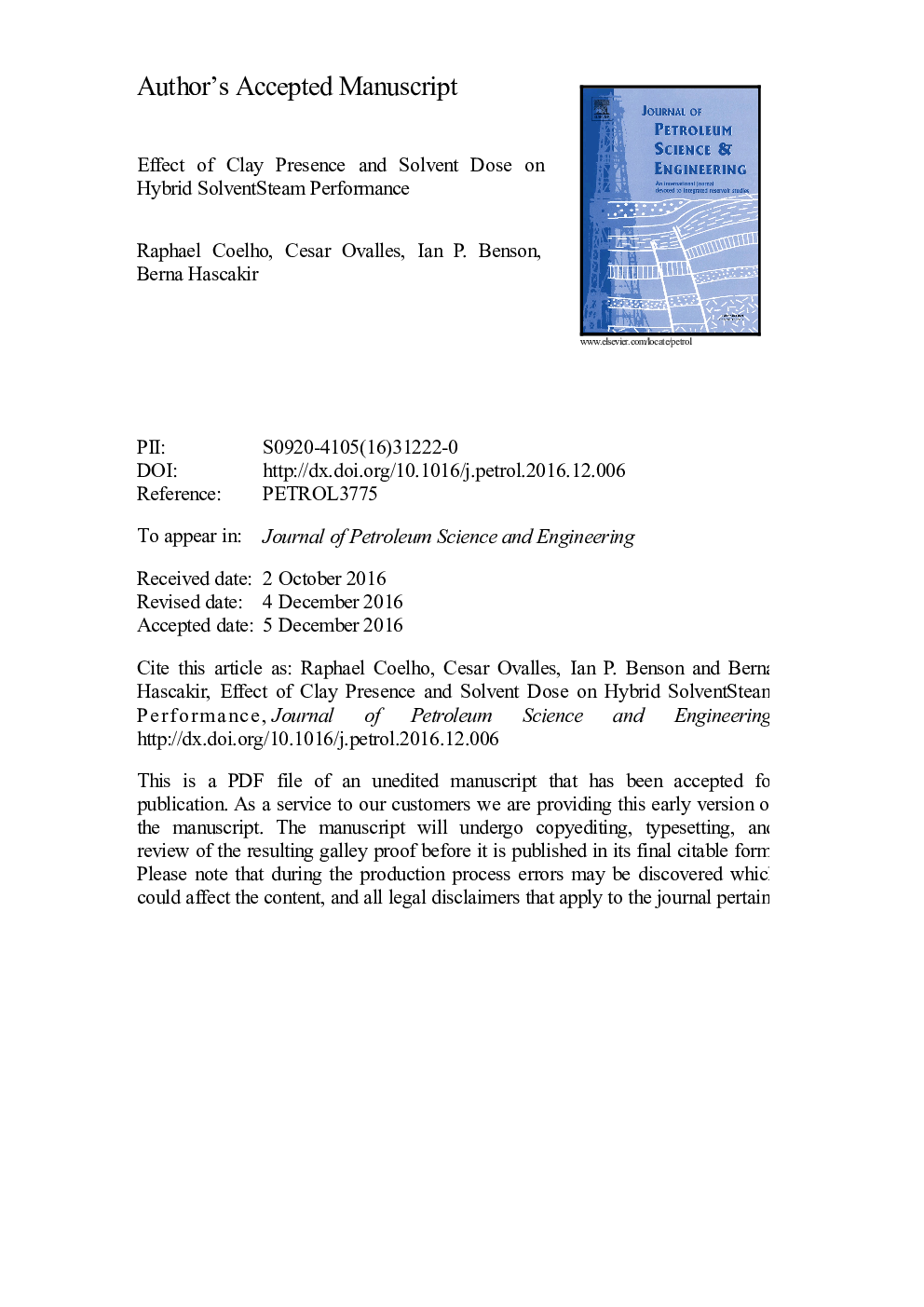| کد مقاله | کد نشریه | سال انتشار | مقاله انگلیسی | نسخه تمام متن |
|---|---|---|---|---|
| 5484333 | 1522791 | 2017 | 17 صفحه PDF | دانلود رایگان |
عنوان انگلیسی مقاله ISI
Effect of clay presence and solvent dose on hybrid solventÂ-steam performance
دانلود مقاله + سفارش ترجمه
دانلود مقاله ISI انگلیسی
رایگان برای ایرانیان
کلمات کلیدی
موضوعات مرتبط
مهندسی و علوم پایه
علوم زمین و سیارات
زمین شناسی اقتصادی
پیش نمایش صفحه اول مقاله

چکیده انگلیسی
The goal of solvent-steam-flooding is enhancing bitumen displacement by the simultaneous development of solvent miscibility and reduction of oil viscosity. Though this strategy reduces greenhouse gas emissions, solvents are generally expensive. Additionally, bitumen recovery performance is affected by oil/solvent/clay/asphaltene interactions on the pore-scale level. Therefore, solvent dosage and type must be optimized to maximize recovery, while minimizing environmental impacts and operational costs. To investigate the performance of solvent-steam processes, six-core flooding experiments were conducted on a Canadian bitumen sample with 8.8°API and 54,000 cP at room temperature. Propane-steam flooding was tested and compared to steam-flooding. The effect of reservoir clays is studied by carrying out experiments in the presence and absent of clays. Three propane flow rates were tested to examine the impact of solvent dosages. After the experiments, asphaltene, clay, viscosity, and water contents in produced oil were measured. The results indicated that propane-steam flooding increased recovery factors, accelerated production, and had higher quality oil than steam-flooding. The lowest propane flow rate (1:9 v/v) improved oil recovery by 23%, indicating that higher solvent concentration may not be needed. This work reveals that bitumen microscopic displacement efficiency is enhanced by the addition of solvent to steam flooding. It is proposed that pore-scale interactions, solvent flow rate, and clays also highly influence produced oil quality and oil recovery rates.
ناشر
Database: Elsevier - ScienceDirect (ساینس دایرکت)
Journal: Journal of Petroleum Science and Engineering - Volume 150, February 2017, Pages 203-207
Journal: Journal of Petroleum Science and Engineering - Volume 150, February 2017, Pages 203-207
نویسندگان
Raphael Coelho, Cesar Ovalles, Ian P. Benson, Berna Hascakir,